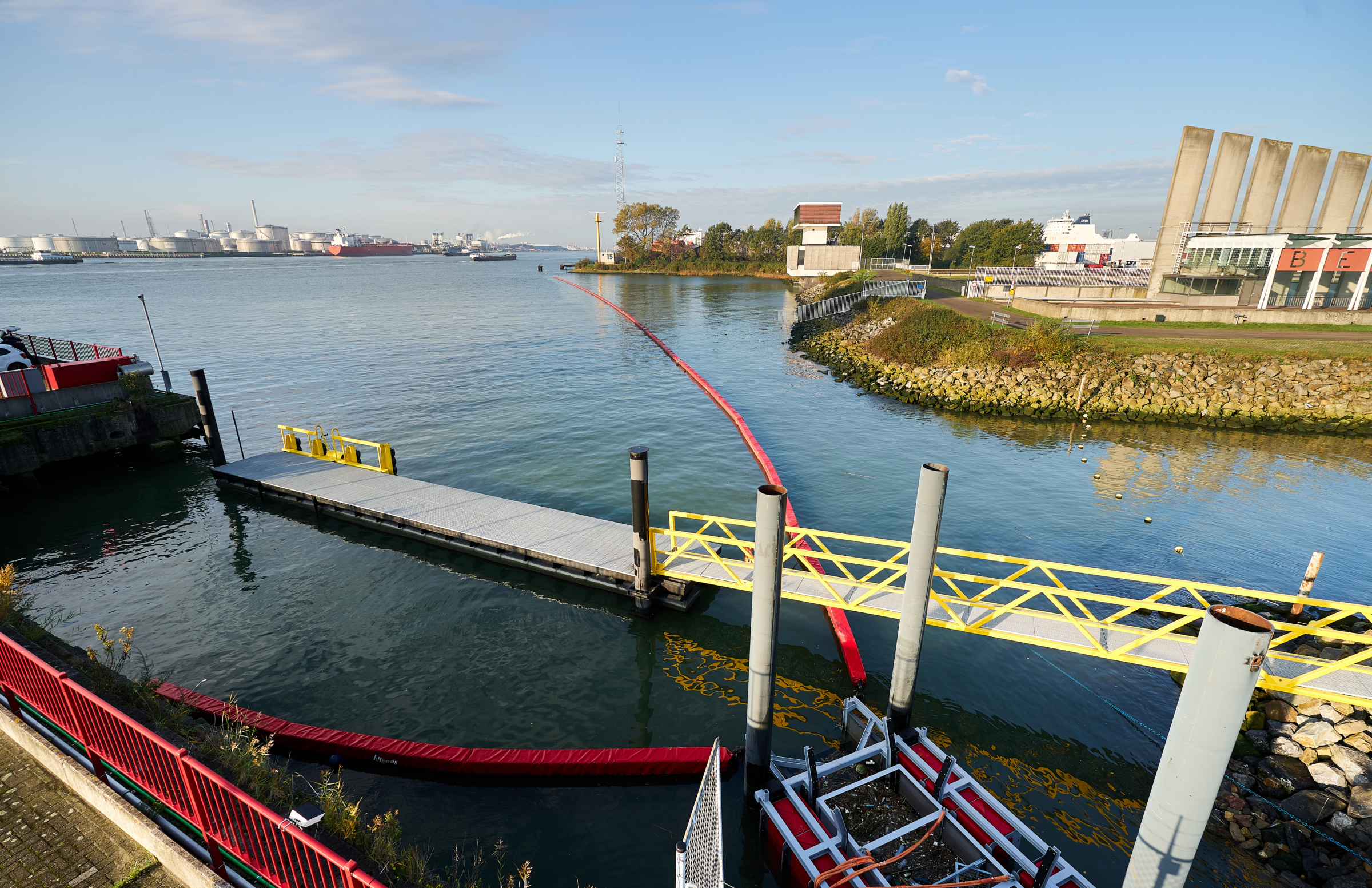
Working every day at sea, Allseas witnesses first-hand the devastating effect plastic pollution is having on the world’s oceans and marine life. Plastic pollution is a global problem, and we are committed to the cause to help clean our oceans of plastic trash. Within Allseas’ Innovations Department, a team of dedicated engineers is leading the way, leveraging our engineering expertise and creative thinking to develop systems to catch plastics in rivers and waterways before they can reach the seas and oceans.
Analysing the quantities and distribution of plastics in rivers
A key objective of the plastic project is to develop knowledge on the quantities and distribution of macro- and micro-plastics (< 5 mm) in rivers. The project team has been performing tests with its plastic sampler in different waterways in the Netherlands. The sampler comprises three nets set at different water depths up to 5 metre under the surface so the vertical distribution of plastics can be investigated in various zones of the river. Factors such as wind and current are recorded to assess their effect on the distribution of plastics.
Waste is analysed and sorted by size and material type. Macro litter is analysed at Allseas’ laboratory. For micro plastics, Allseas collaborates with the chemistry and biomedical departments of the Hogeschool Rotterdam. The results can be used later to help predict plastic waste hotspots.
Allseas’ plastic collection systems
Allseas has developed and installed a plastic collection system for the Port of Antwerp, Belgium, and performed a study about plastic pollution in the Verversingskanaal in Scheveningen, the Netherlands.
In October 2020, our most recent waste collection system ‘Catchy’ has been put into use in the Vijfsluizerhaven in the Nieuwe Maas. Installed as a pilot for Rijkswaterstaat, Catchy will remain in place until June 2021.
Catchy collects litter 24 hours a day, 7 days a week – both floating litter and waste up to a metre under the surface. The system prevents macro and microplastics from flowing into the protected nature reserve north of the Vijfsluizerhaven and out into the North Sea. Catchy works entirely on wind and current, and is not limited by weather conditions.
How Catchy works
Catchy has two floating booms (one of 12 metres and one of 200 metres) fitted with an underwater skirt at the bottom. As a result, both floating waste and waste up to 1 metre below the surface are guided into the collection cage. In Vijfsluizerhaven, this is deep enough to collect the largest waste flows and also gives enough space for fish to easily swim underneath the skirts. A non-return flap at the front of the system ensures that the collected waste cannot flow back out of the collection cage.
The system is emptied monthly and is expected to collect about 200 kilograms of waste a month. This waste is sorted in Allseas’ laboratory and analysed for material type, size and weight. On that basis, Allseas wants to gain insight into the cause and extent of the litter problem in the Nieuwe Maas and make recommendations on how the collected litter can be processed sustainably and cost-effectively.
Background information on plastic pollution
Increased global production and poor waste management has led to a build-up of plastic litter in the world’s oceans. In the diverse marine habitats, including beaches, the sea surface, water column and seafloor, millions of tonnes of plastic debris is present. Plastic pellets lost in the process of fabricating plastic objects and degradation of larger plastic items lead to the formation of abundant small micro-plastics, which are ultimately ingested by plants, fish and animals, passing durable microscopic contaminants to organisms higher up the food chain.
The flow of plastics into the oceans occurs through a variety of pathways, but rivers are one of the largest contributors. Removing these ‘plastic soups’ from vast water bodies is challenging. One solution to prevent plastic waste from building up in oceans is to catch it in the rivers before they can transport it to the oceans.
European grant LIFE awarded to back Allseas’ plastic removal efforts
Our efforts have received EU financial backing in the form of a grant under the LIFE programme, the EU’s funding instrument for environmental and climate action and has a duration of 3 years. It aims to support existing waste management processes, and develop and deploy state-of-the-art plastic identification and recovery tools.